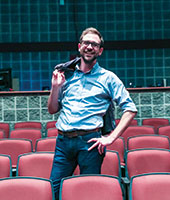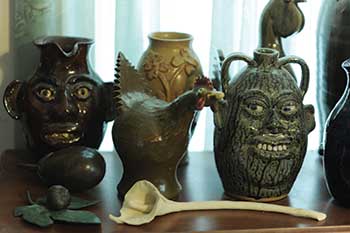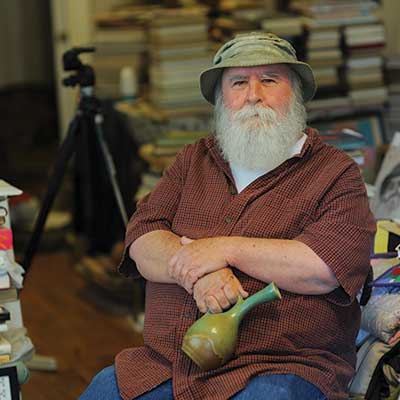
A master woodcarver at his craft
Story by Scottie Vickery
Photos by Wallace Bromberg Jr.
David Foote peered intently through the lighted magnifier attached to his kitchen table and carefully cut a miniscule section of a duck’s feather with a small knife. It’s that attention to detail that makes the woodcarver’s art come alive, whether he’s recreating feathers, a beak or the shell of a turtle.
 “You’ll never find anybody who has put more love and consideration into a piece than I have,” said Foote, who has been carving wildlife – mostly birds – for 38 years. “You’re looking at somebody who no doubt loves what he does.”
“You’ll never find anybody who has put more love and consideration into a piece than I have,” said Foote, who has been carving wildlife – mostly birds – for 38 years. “You’re looking at somebody who no doubt loves what he does.”
Foote’s creations have been featured at the White House, the Smithsonian Institution, the headquarters of the National Audubon Society in Manhattan, and in homes and offices in 11 countries. He’s taking commissions two years out, and his carvings can fetch thousands of dollars. Despite the acclaim, the Pell City artist is always honing his craft.
“I’m just an old country boy,” he said. “I’ve gotten to go to a lot of places and meet a lot of people because of my artwork, but I never feel like I’ve reached a pinnacle. It’s a continual learning process.”
Foote has learned a lot about himself in recent years, largely because of health issues that have plagued him. Ten years ago, while in the hospital with double pneumonia, he had a heart attack at age 47. In 2015, he battled squamous cell cancer in his throat and very nearly lost his life. The experiences helped him grow as a person and an artist.
“I was on life support for three weeks and in intensive care for a few more,” Foote said of his cancer fight. “I left the hospital in a wheelchair because I couldn’t walk. The doctor said, ‘I can’t tell you what to expect, because I’ve never seen anybody come back from the dead.’ I thought I’d never carve again.”
Instead of feeling sorry for himself, Foote thanked God for healing him and for every bird he’d had the opportunity to create. “Even if I didn’t carve another one, that was fine,” he said. “I was at peace with it.”
Slowly but surely, however, he began to regain his strength. As he graduated to a walker and then a cane, he began to think about once again pursuing his passion. “Finally, one day I picked up a knife and took a piece of wood and just started carving,” he said. “I realized I could do a little more each day.”
Foote, 57, first fell in love with carving at 18. The son of Wayne and Wanda Foote, he grew up on the river with his sister and two brothers, including an identical twin. His mother was a primitive antiques dealer, and his father, who had a long career in the iron industry, also built and restored furniture and log houses.
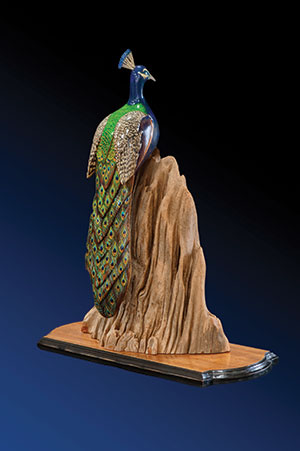 “My dad taught me a wonderful respect and reverence for wood,” Foote said, adding that he learned the different properties of wood make some types better for creating baskets and others best for making furniture. “He looked at wood like we look at different people.”
“My dad taught me a wonderful respect and reverence for wood,” Foote said, adding that he learned the different properties of wood make some types better for creating baskets and others best for making furniture. “He looked at wood like we look at different people.”
Foote also developed his love of nature and wildlife as a child. On fishing trips with his father, he spent more time feeding ducks than he did baiting his hook. “People ask me all the time why birds and why wood,” he said. “I’m a bird person; I notice them everywhere. And I like the unforgiveness of wood. You’ve got one shot. If you take something away, you can’t put it back.”
Not long after graduating from Pell City High School in 1980, Foote stumbled upon a craft show at a Birmingham mall and was mesmerized with one artist’s wood carvings. “We got to talking and he said, ‘You know a lot about wood, and you know a lot about birds. Have you ever thought about carving?’”
The man, Don Mitchell of Leeds, gave him his card and invited the teenager to visit his workshop. “I wanted to go the next day, but I waited two weeks,” Foote said. “He had an old garage he’d converted to a shop. When we walked in that door, that was it. Before I left there, he gave me my first carving knife and said, ‘Go carve a bird and when you get done, I want to see it.’”
Mitchell mentored Foote for about two years before he passed away. Later, Foote read everything he could get his hands on about birds and the art of wood carving, and he said he is largely self-taught. “My mother still has the first bird I ever carved,” he said. “My stuff was very crude back then, but my father gave me some good advice. He told me that there are no straight lines and nothing flat in nature.”
Foote’s art allows him to use another one of his talents and loves – painting. “I have always been artistic,” he said. “I was just always able to draw from first-grade on. The teacher would say, ‘Draw a bird, draw a house,’ and mine always got hung up on the board.”
He took art in middle and high school and said he was blessed to have accomplished artist John Lonergan, who lives in Pell City and is well known for his paintings and pottery, as his teacher. “He kind of took me under his wing,” Foote said.
For much of his career, Foote’s brush strokes provided the exquisite detail on the figures he carved mostly from bass wood. His recovery from cancer and brush with death, however, gave him the incentive he needed to try what he had wanted to do for a long time – take his skill to the next level and provide most of the detail through woodburning and carving rather than just paint.
Foote had experimented with the technique before cancer, but was afraid the extra work and time required would make his pieces too costly. “Everything back then was smooth and slick and didn’t have the intricate details,” Foote said. “When I got through cancer and saw I was going to be able to carve again, my whole attitude changed. I decided I don’t care if anyone buys it. I’m going to do it like I want.”
Foote, who now creates full-size, half-size and miniature works of art mostly from Tupelo gum wood, needn’t have worried. His customers pay anywhere from $1,000 for a small songbird to $5,000 for a full-size waterfowl. “What used to take 20-40 hours to complete now takes 400 or 500, so I’m averaging $8 or $10 an hour,” he said with a laugh. “I do what I do because I love it. I have never seen the face of a wood carver on the cover of a Fortune 500 magazine.”
Early career
Foote got his start in craft shows in his 20s and quickly began to win awards. The resident wood carver at Springville’s Homestead Hollow for 20 years, he shared his love with kids, many of whom were inspired to carve their own pieces. Perhaps the biggest surprise of his career, though, was when officials from the Alabama State Council on the Arts asked him to carve a yellowhammer for the White House Christmas tree in 2002. First Lady Laura Bush had selected a theme of “All Creatures Great and Small,” and the tree featured ornaments of each state’s bird handcrafted by local artists. The works were later exhibited at the Smithsonian.
Not long after, Foote was one of two artists worldwide selected to provide sculptures of endangered birds for the Audubon Society headquarters. “I consider that to be my claim to fame because they are the bird people of the world,” said Foote, who carved a pair of Virginia rails. “The other artist was a 10th-generation porcelain bird sculptor from Germany.”
While he appreciates the recognition he has received, Foote mostly enjoys doing what he loves for people who love it.
“It gives me great satisfaction when someone who gets up early every morning and works hard to put food on the table calls and says he wants one of my pieces,” he said. “This is a passion. I don’t know any other way to say it. As long as God gives me the strength in my hands and sight in my eyes, I’ll continue to do it.”











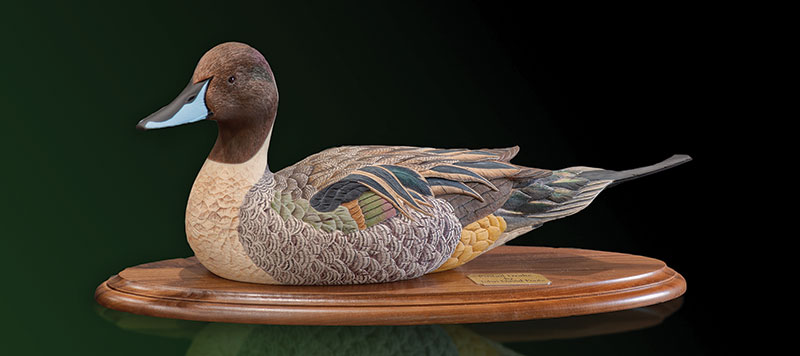
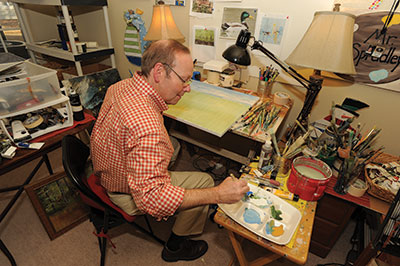
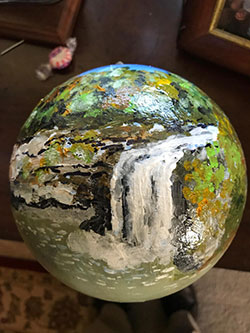 “It is our honor to decorate our home state tree and help the nation celebrate the holidays in one of our most recognizable parks,” said Valerie White, director of Heritage Hall Museum. “We are all excited to be part of the ‘America Celebrates’ display. It gives us an opportunity to show our pride in our state’s artistic talent, stunning natural wonders and vibrant cultural heritage.”
“It is our honor to decorate our home state tree and help the nation celebrate the holidays in one of our most recognizable parks,” said Valerie White, director of Heritage Hall Museum. “We are all excited to be part of the ‘America Celebrates’ display. It gives us an opportunity to show our pride in our state’s artistic talent, stunning natural wonders and vibrant cultural heritage.”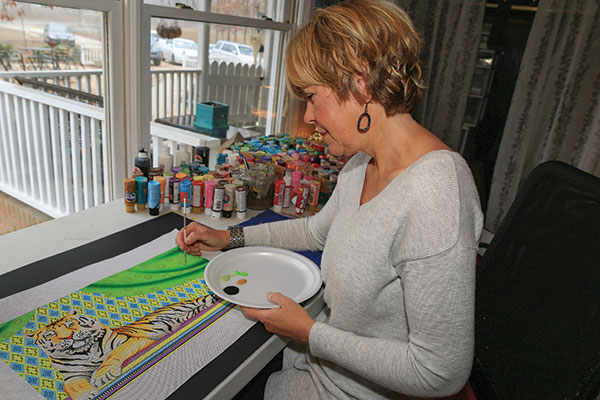
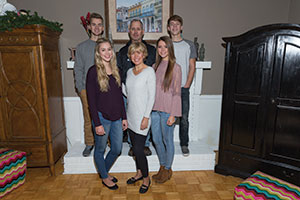 Marie and her parents lived with grandparents in the countryside in a home without indoor plumbing.
Marie and her parents lived with grandparents in the countryside in a home without indoor plumbing.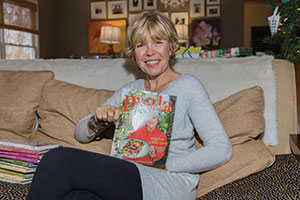 From the large floral acrylic on canvas that accents her dining room to the vibrant needlepoint pillow she had just finished, all her pieces show her penchant and flare for color.
From the large floral acrylic on canvas that accents her dining room to the vibrant needlepoint pillow she had just finished, all her pieces show her penchant and flare for color.

